Pruning Fruit Trees
Depending on what fruit tree we are talking about will depend on the time of the year that it is pruned. Now is an ideal time to carry out pruning on apple, pear and plum trees. We will talk about plum trees later in some more depth as they are slightly different in their pruning regime.
Rootstock
The tree is grafted onto a different plant. This is firstly to control growth and also to give pest and disease resistance. Common rootstocks used for apples are M27, M9, M26, MM106, AND MM111. The smallest trees will be grown on M27 and ascend in size as listed. For pears, Quince A or Quince C is virtually the only choices.
You might be thinking why are rootstocks important, well you would not want to try by pruning to contain a MM111 root stocked tree in space of only a few cubic meters, that wants to grow 4 to 5 meters in width and height. So choosing the correct rootstock for your garden can make your life much easier when it comes to pruning.
summary of Rootstocks:
- Rootstock Width Height Staking? Plant to Harvest
- M27 <1.5m (5ft) <1.5m (5ft) Yes 2 years
- M9 2m (6.5ft) 2m (6.5ft) Yes 2 to 3 years
- M26 2.5m (8ft) 2.1m(7ft) Yes 3 years
- MM106 3.6m (12ft) 3m (10ft) No 3 to 4 years
- MM111 4.8m (17ft) 4.3m (15ft) No 5 years
If you would like to know more information about rootstock or you would like to clarify a question you have then please contact Blue Iris Landscapes on our Free Phone Number 0800 0937926 or email us at info@blueirislandscapes.co.uk
Types of Trees
Cordon, Dwarf Pyramid, Bush, Espalier, there are variations on these and other pruning examples such as Fan type trees but for fans it is only peaches that are normally grown in this way.
Cordons are single lines or multiple stems that are trained vertically or more normally on an angle. The main features are multiple spurs running up the trunk with no branches. With their linear growth habits (not natural but due to pruning) these can be planted closely together and therefore you can have a number of trees or lots of different varieties where you may only have space for one bush tree.
Dwarf Pyramid This is best described as a free growing vertical cordon, they say it is easier to produce than the very strongly pruned cordon but I’m not sure.
Bush, these are grown in two ways, the Open Centre Bush or the Central leader Tree. The trunk on an open centred bush is around 0.6m long but can be more. It has branches coming off this abut is open in the centre, like a goblet. This allows insects good access to pollinate, the sunshine to get to the fruits to ripen them as well as allowing the wind to pass through the tree more easily, therefore, limiting fungal disease build-up. Central leader trees have a main stem that continues vertically so that branches arise over a great length, so generally a larger tree.
Espalier is a vertical stem/trunk with horizontal branches coming off in three or four tiers. These are ideal against a south or westerly wall, as this will increase the speed of growth and decrease the time it takes the fruit to ripen.
Pruning
The object when training and pruning are to obtain the most aesthetic effect or the optimum crop possible. Whilst carrying out work on your trees it is important to maintain an attractive shape and appearance, the balance must be kept though between, growth, flowering & fruiting, while keeping the plant vigorous and in good health.
If you have bought a maiden (one-year-old) tree then for the first few years the object is to get the structure right. As this can take a number of years if you would like me to go through this with you then please phone on 0800 093 7926 and organise a site visit. Most people buy a tree that is already three to five years old and therefore it is only following the basic structure that has already been laid out to increase the size of the tree.
What we come across the most are trees that are mature but neglected. This involves three simple steps. It is good to note now that if unsure do not cut anything off, each projected pruning cut must have an objective! That said you always start with the 3 D’s, Dead, Diseased and Dying these have to be removed for the health of the plant. Next and crossing branches that are touching or are needed to be removed to let air and light into the tree. Finally, you prune to reduce or increase the number of fruiting spurs. These are the buds that actually produce the fruit. Spurs will form naturally in most cases, or pruning between November and February or in the summer can induce them. A lateral (side shoot) pruned back in the winter to 3 or 4 buds will produce one or two shoots from the uppermost buds, but usually, the lower wood buds will be transformed during the summer to flower buds. These are much fatter than vegetative buds and are easily recognised when compared. Once the flower bud has formed cut back the unit to the top of the flowering bud and there is the basis of your spur. If the bush is healthy and well mulched then the fruiting spur should get bigger and produce more and more each year.
If you have any further questions on the right time to prune your trees then please contact us on one of the following options and we will be happy to help: –
